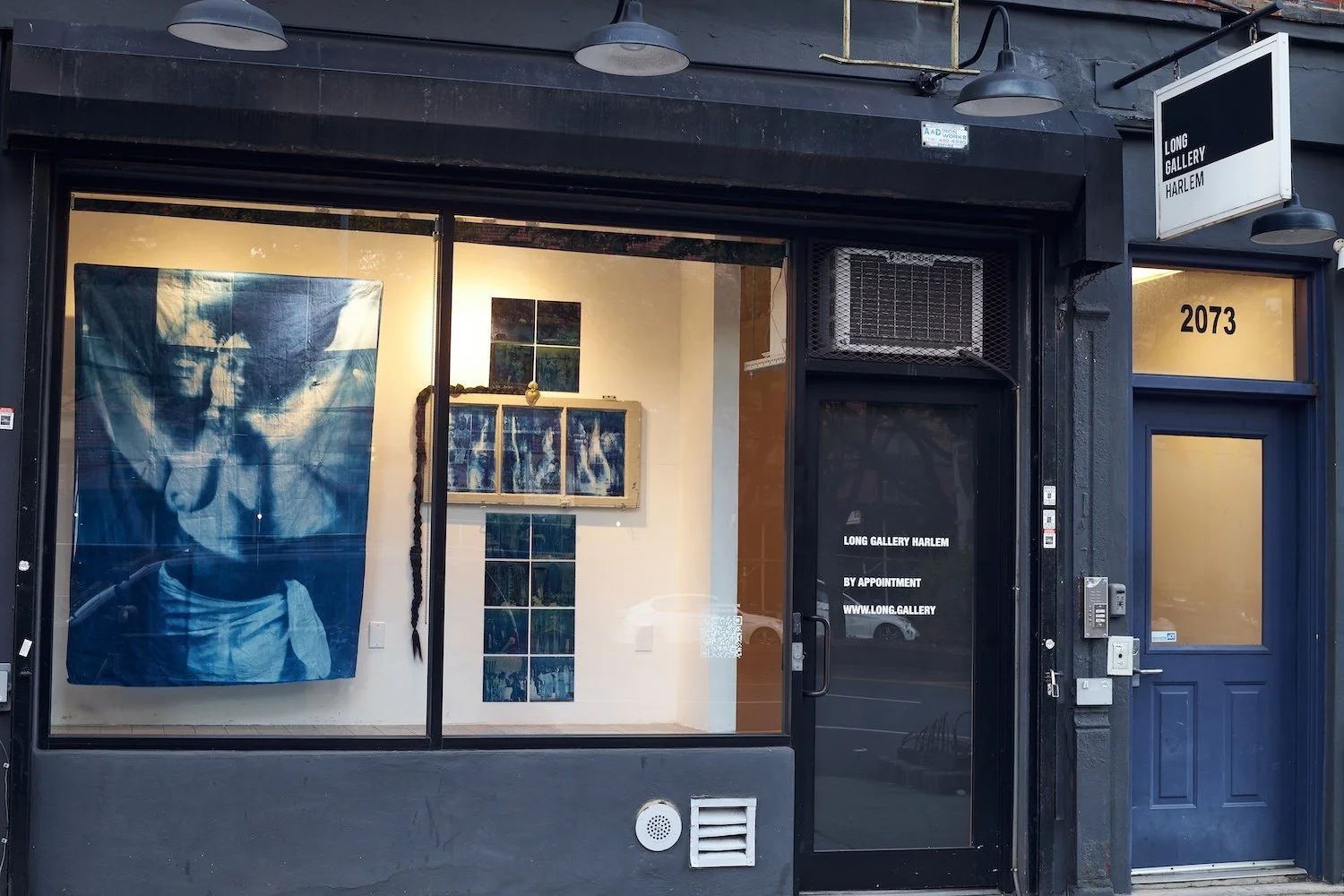Praise Fuller: A Shrine for Self-Determination
Praise Fuller, A Shrine for Self-Determination, 2025 (installation view at Long Gallery Harlem). Curated by Sika Bonsu. Photography by Andrew Godreaux.
Their Eyes Were Watching God (1937) posits love’s grammar as the soil where self-actualization takes root; A Shrine for Self-Determination (2025) consecrates that ground as a liturgy of becoming.
Praise Fuller traces her artistic origin back to writing stories by hand and doodling in church pews to stay awake during sermons. Beginnings marked by questions about who she might be beyond the constraints of family, faith, and social expectation. Alternative spaces built with friends offered the first visions of freedom. Like Janie Crawford, Hurston’s protagonist, who has her awakening to life and love underneath a pear tree, those moments for Fuller created a hunger for a life on her own terms. She carries those memories like talismans, cultivating a practice that strikes a balance between her inner world and community.
We can often read our inner questioning as turmoil and rush to avoid its discomfort. But in the same light, we must ask ourselves what or who our avoidance serves? What hidden truths do those questions reveal? A Shrine for Self-Determination asks for stillness so those questions can offer direction(s) toward collective freedom. Working in cyanotype and utilizing found objects and archival photographs of Southern sharecroppers, Fuller composes spectral portraits that summon our environments and name systems of oppression. A seraphic figure protects the altar and enshrines a resistance that survives beyond us, renewing itself in every generation– eternally.
Let Harlem’s legacies stand as living data, memory stitched through the fabric of time to meet us here. Here we are face-to-face with the horizon that Hurston names. Her emblem of a self-authored life is concrete on the blocks between 110th and 155th. These storefronts, art, and culture didn’t happen by chance; they were built by people who claim Janie’s revelation as their own. A Shrine for Self-Determination is a continual devotion to those journeys and wisdom gained through hardship.
Artist Bio
Praise Fuller (b. Houston, Texas) is a New York-based self-taught interdisciplinary artist, poet, and educator whose work moves between printmaking, installation, and mixed media, always with an emphasis on the cyanotype process. Drawing on the gothic textures of the South and inspired by its hymns and silences, its devotion and destruction, what rots and what is renewed, she creates compositions where self-portraiture, archival photographs, and found objects converge. Surreal cyanotypes become reflections on memory, spirituality, resistance, and community. Fuller has been an artist-in-residence at Poco a Poco (2023) and the Macedonia Institute (2025), with work exhibited with the Harwood Museum in Taos, NM, Ward Gallery (formerly 25 Allen St) in collaboration with Slow Factory, and has taught at the Center of Photography at Woodstock.
Curator Bio
Sika Bonsu (she/her) is an artist and curator whose work is grounded in Black feminist thought. She creates spaces across image, text and exhibitions that honor Black feminine wisdom and advance self-determined ways of knowing. Carrying heritage from the Asante kingdom of Ghana, Bonsu’s practice is shaped by histories of migration and the shared aesthetic languages across the Black Diaspora. Her training in art history, gender studies and museum practice deepens her commitment to reimagining how institutions preserve and value culture. She holds a BA in Art History and Gender & Women’s Studies from Virginia Commonwealth University and an MA in Museum Studies from New York University, where her research oriented abstraction in Black femininity, reframing it as a strategy of refusal within systems that have historically denied Black femme agency.
Installation Images
Photography by Andrew Godreaux
Dates
October 5 through November 2, 2025
Location
Long Gallery Harlem
2073 Adam Clayton Powell, Jr Blvd.
New York, NY 10027
Artist
Praise Fuller
Curator
Sika Bonsu
Organized by
Sundia Nwadiazor & Diallo Simon-Ponte

